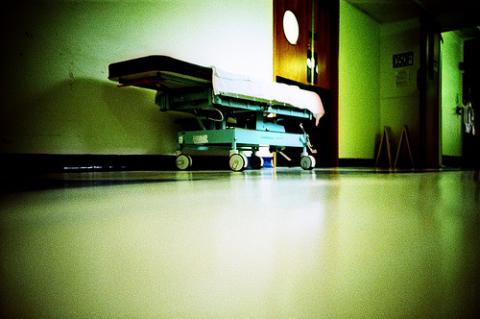Reason for 'cautious optimism' about hospital wait times?

Targets set by Minister James Reilly for reducing the number of people waiting on trolleys and wait times for hospital treatment are unambitious, but if achieved they may be reason for cautious optimism. By Sara Burke.
On Wednesday 25 January, Minister for Health James Reilly held a news conference to announce new targets on reducing the numbers of trolleys and wait times for hospital treatment. It was good news all round, and “cautious optimism” was the prevailing sentiment of the day. After a national forum of hospital managers, HSE and Department of Health people, new targets were announced for shorter wait times in Emergency Departments and for planned hospital treatment. These have been two of the Minister’s priority areas since he came into government less than a year ago.
Just weeks into office, Reilly said that “you will never again see 569 patients on trolleys.” He set up a Special Delivery Unit [SDU] (his swat team or ‘nerve centre’) in the Department of Health to sort out the long waits for public patients for hospital treatment. At the press briefing on 25 January, Minister Reilly was talking it up, saying that “reform does work, and delivers for patients”; that they were “improving quality with decreasing resources”; there was a “cause for cautious optimism”; and that “this year is a year of reform” that will “deliver Irish people a service they can feel safe in”.
The first target announced is about trolleys – namely that no one should wait more than nine hours in Emergency Departments, and, significantly, that 95% of those attending should be seen within six hours. That’s from time of arrival in an Emergency Department to either leaving the department or getting into an actual bed.
Given the €750m cut in the budget and decreased staff numbers, is this emergency care target realistic? The Minister and his SDU team think so. They went to great effort - showing chart after chart of improvements in numbers on trolleys, comparing recent weeks to this time last year.
Although trolleys are a very crude measurement, there is a considerable improvement– there were 1,800 fewer people on trolleys in 16 work days in January 2012 compared to two years ago, and 1,300 fewer when compared to last year – so that’s progress. There are still more than 5,000 people waiting on trolleys. Obviously each one is one too many. But there are fewer than before.
Can the improvement in numbers be explained by the weather or by fewer people presenting, or is the system getting better?
The numbers presenting are up, not down, and the numbers being admitted to hospital beds is slightly up so there is a real improvement although given the high numbers still on trolleys there is room for much more.
Can the six-hour target be achieved by December 2012? Again, the Minister and his SDU team seem think so, with the implementation of better systems in Emergency Departments, the monitoring of numbers three times a day, the use of newly opened Medical Assessment Units, better use of hospital beds, and more primary care.
But there was a difference with the briefing when compared to a previous SDU off-the-record briefing in October - Minster Reilly was accompanied by Ministers of State Kathleen Lynch and Róisín Shortall, while HSE head of clinical programmes Barry White was there giving a more coherent, unified, system-wide approach.
The other target announced is that “no one should wait more than nine months for elective treatment” - given the €750m coming out of health system, and 3,000 fewer staff, is that really possible?
Well again, the Minister and his swat team seem confident that by December 2012 no one will wait more than nine months for hospital treatment. The Minister had previously set a target of no one waiting more than a year by the December just gone. I put it to him these were very unambitious targets; that previous governments had set targets of maximum wait times of six and three months. Minister Reilly pointed out that difference is previous governments never achieved them, and that this government had more or less achieved the 12-month target within nine months.
I also put it to him that it might result in increased numbers waiting between three and nine months, which the publicly available material says is what happened up to October last year. Martin Connor, the SDU special advisor, said it was “achievable, although ambitious and a stretch to achieve”.
These targets, although unambitious, if achieved are good news for people. Yet we know the longest wait for people is often the wait to see a specialist in the first place (known as the outpatient waiting list), but despite promises there was no target set for this.
There are problems with accurate outpatient waiting numbers and times, but the SDU are working on this and have committed to furnishing information on the numbers waiting, and for how long by the end of March. After that they will set a target. Because this is the real bottleneck in the Irish health system, this target will be most important.
Here’s hoping the Minister's and his swat team's targets are reached. Reason for “cautious optimism” perhaps?
Image top: FatMandy.
